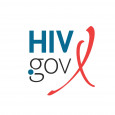Each year on October 15, National Latinx AIDS Awareness Day (NLAAD) focuses on HIV in Hispanic/Latino and Latinx communities. The Latino Commission on AIDS (LCOA) and Hispanic Federation created this observance in 2003, making 2023 the 20th anniversary of this observance day. This year’s theme is “Do it your way. Do it right.” which urges the community, specifically those who are HIV-negative and sexually active, to choose one of many preventative options to maintain their negative status and to do it in their own way but in a smart and unique way.
NLAAD is an opportunity to share information and the following resources about HIV:
- Watch HIV.gov’s conversation with Guillermo Chacon, President of LCOA in English and Spanish.
- Downloads and links to the NLAAD logo and shareable graphics and infographics at nlaad.org.
- Use the national viral suppression campaign materials from “Celebro mi salud,” which is part of the “I am a Work of ART” campaign.
- Resources on HIV testing, prevention, treatment, and stigma on CDC’s Let’s Stop HIV Together campaign page.
- HIV.gov facts about the HIV epidemic in the United States and links to resources on the impact of HIV on racial and ethnic minorities, including a CDC factsheet on HIV among Hispanic and Latino community members.
Other Resources
- Learn more about the LCOA here
This community is among those disproportionately affected by HIV compared to other racial/ethnic groups. According to CDC, of the 32,100 new HIV diagnoses among adolescents and adults ≥13 years in the United States and dependent areas in 2021, 29% were among Hispanic/Latino people. Hispanic/Latino gay, bisexual, and other men who have sex with men are listed among the priority populations in the National HIV/AIDS Strategy (NHAS), which has specific goals to address this disparity. The NHAS calls for ensuring resources are focused on communities and populations where the need is greatest and creating funding opportunities that specifically address social and structural drivers of health in these communities.
This blog post was originally published September 27, 2023, on HIV.gov.







Comments
Comments